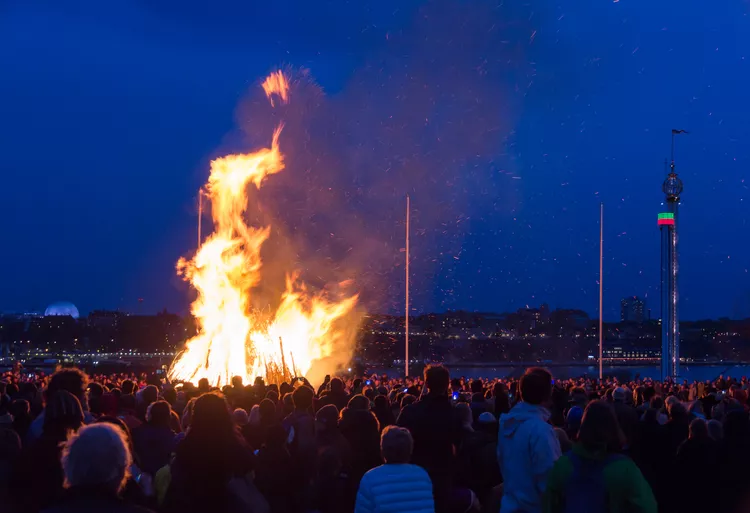Summary of Walpurgis Night Celebrations in Sweden
Walpurgis Night in Sweden
Walpurgis Night in Sweden is a very special event and a great way to experience Sweden’s traditions. Walpurgis (Swedish: “Valborg”) on April 30 is widely celebrated in Scandinavia, particularly in Sweden.
Walpurgis Night precedes Labour Day in Scandinavia on May 1, and many Walpurgis events continue overnight from April 30 into that holiday.
Celebration
The forms of celebration in Sweden vary across different regions and cities. One of the main traditions is to light large bonfires, a custom that dates back to the 18th century. Lighting bonfires was initially aimed at keeping away evil spirits, particularly demons and witches. As a final highlight, you can expect beautiful fireworks to light up the night sky.
Today, Walpurgis Night is seen as a celebration of springtime. The Skansen Open Air Museum, for example, hosts Stockholm’s largest historical Walpurgis celebration. Many Swedes celebrate the end of long, dreary winters by singing traditional spring songs. These songs were passed down through students’ spring festivities, making Walpurgis Night celebrations especially prevalent in university towns like Uppsala, where nightlife is particularly vibrant during this occasion.
A Double Holiday
Walpurgis (Valborg), celebrated on April 30, creates a double national holiday in Sweden. On this day, King Carl XVI Gustaf also celebrates his birthday, leading to the display of Swedish flags across the country to honor the King.
May Day/Labor Day (May 1) follows Walpurgis Night celebrations, featuring a wide array of events, parades, and festivities that bring communities together.
More History
The joyful celebration around the fire is an age-old Germanic and Celtic tradition. In Sweden, known for its folklore of trolls, witches, and elves, Christianity struggled to erase this festive occasion. As late April rolls in, days grow longer, temperatures climb, and farmers begin tending to their fields, reinforcing this annual tradition.
The name of the event is derived from the abbess Walburga (also Walpurga or Walpurgis), who lived during the 8th century (710-779). Originally from England, she became a missionary and was later canonized.
If you plan to attend a Walpurgis Night event during your visit to Sweden, ensure that you pack clothing that can be layered. The weather during this season can be unpredictable, and warmer clothing might be necessary. Additionally, weatherproof shoes or boots are advisable, as the celebrations often take place outdoors, potentially in areas where the ground has recently been wet.
Walpurgis in Swedish is “Valborg” and Walpurgis Night in Swedish is referred to as “Valborgsmassoafton”.




